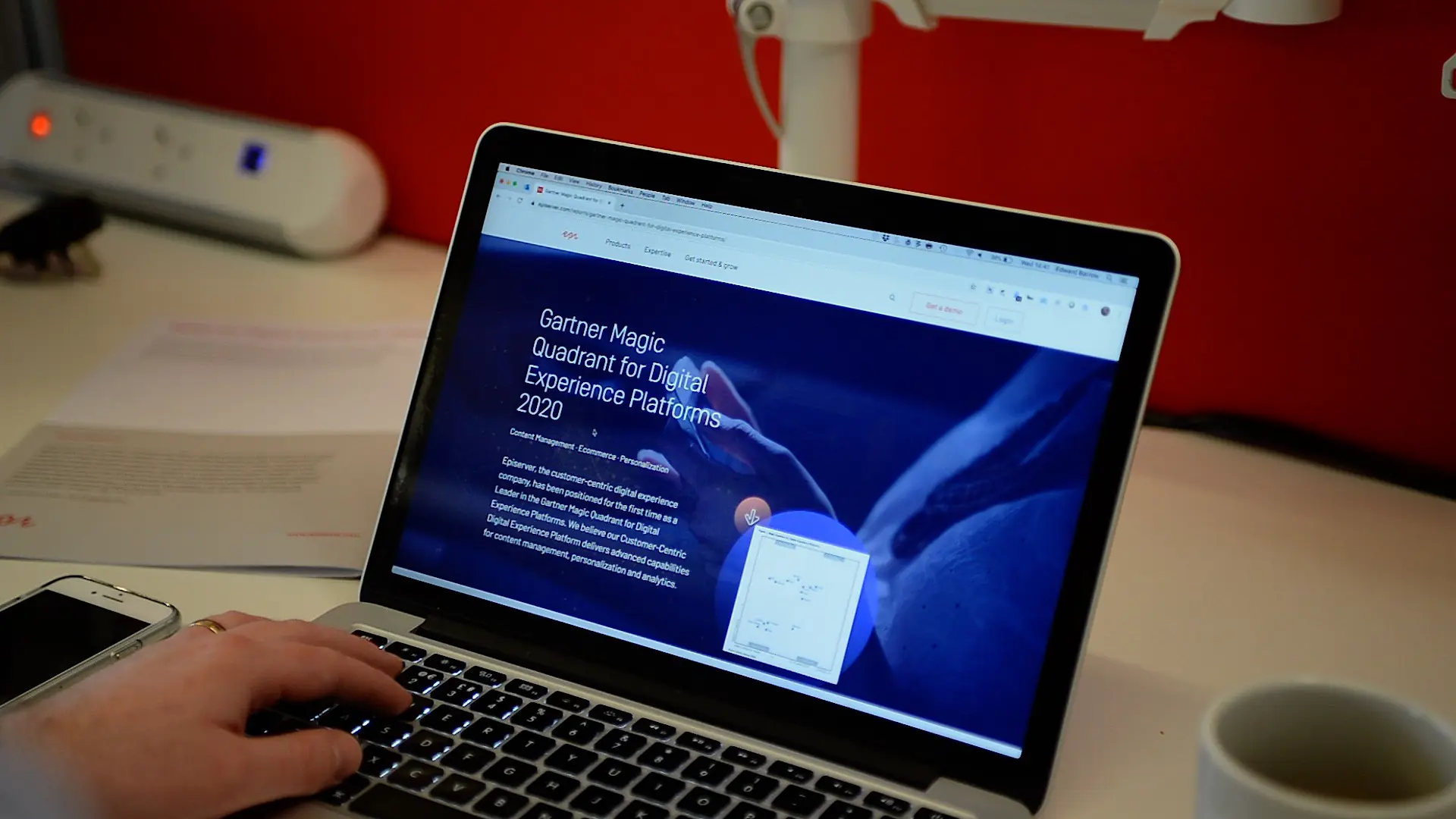Roadmap to your new Digital Experience Platform
Purchasing a digital experience platform can seem overwhelming for companies going from 0 to 60 in their digital maturity. So let's evaluate what we mean when we say "DXP" and what you need now versus what you can grow into.

Justin Anovick

I remember, maybe 20 years ago, setting up ecommerce websites. There were all kinds of disconnected pieces; you needed to go to different vendors, and go through different buying processes, and then somehow stitch the whole thing together – and I’m not even talking about creating something highly sophisticated. The digital experience platform concept means not only an integrated and fast-to-implement platform, but also a platform that delivers a consistent experience across digital channels; not just websites and landing pages, but mobile devices, IOT devices like Alexa – even digital kiosks in stores.
But what does the roadmap look like, from where you are now – whatever your level of digital maturity might be – to getting full value out of a digital experience platform?
Your starting point
It would be easy for us to offer you all of Optimizely’s digital experience capabilities from day one, including AI-driven personalization. We try to be more thoughtful about it. The least digitally mature organizations – the ones feeling the most pressure to evolve digitally in times when customers are engaging remotely – are probably in B2B verticals like manufacturing. These are companies that have traditionally based their go-to-market around catalogs, field marketing, and personal relationships between sales reps and purchasers.
Sure, you can aspire to offer a B2C-like digital experience from day one, but realistically companies like this face more complex challenges. B2C experiences – like that offered by Amazon, for example – are usually one-to-one. Amazon knows me, knows my behavior and understands the experience I’m looking for.
But in B2B, you may be selling to an organization, not an individual. You may not have the same SKUs or the same pricing for every purchaser. One reason B2B brands have struggled to reach digital maturity is that the challenges can seem overwhelming. But they can be overcome, and today overcoming them is imperative.
As a general rule, for any brand starting out on the digital experience journey, the components you need from day one are a homepage, search and search results, and landing pages for different categories of product or service.
Then things start to differentiate, depending on what type of organization you are. If you’re an association or a government agency, you are probably driving the user toward considerations other than purchases, so you might need lead forms. Admittedly, things are easier on the commerce side. You show your products online and you have a checkout process. The sophistication comes when you try to deliver a personalized experience – personalized product recommendations, offers and discounts – rather than just serve a general, homogenous audience.
For beginners on the B2B side, if you’re literally moving to taking orders online rather than by fax, then you’re certainly not looking to go to sophisticated product recommendations in the first six months, but you should have an idea of where you want to go and how to get there.
Two types of customer
That’s my take, but for a closer look at the questions our customers are actually asking, I turned to my colleague Jeff Cheal. As Optimizely's Senior Director of Customer Strategy, Jeff is in constant contact with customers at every stage of their digital experience platform journey.
“There are basically two types of customers, the aspirers and the optimizers” he told me. “The aspirers look at everybody else and want what they have, even if they don’t yet have the infrastructure or mindset to support that. They’re investing in technology to enable their dream about where they want to be.”
“On the other hand, optimizers already have a framework and need additional tools which fit it. Their needs are specific. Now, the way the aspirers can reach their dream is by optimizing the tools they already have, so that the path to enablement is shorter than if they implemented some big new suite of tools which requires a lot of retro-fitting and a lot of knowledge to run.”
So it’s a step-by-step roadmap to your dream digital experience platform. When you can you expect to start adding sophisticated elements like personalization and product and content recommendations?
“You need the content. I know customers that have more personas than they know what to do with. They can recognize someone 25-34 years old, with a household income above $100K, but they don’t know how to reach that customer in a different way than their competitors.”
It’s surely about understanding the needs of the people visiting your website, and what content they’re looking for. They don’t want to be told what to do, they want to participate in the experience. “Correct,” said Jeff, “but you also need to know what the goal of that experience is. If you’re going to create the content needed for personalization, you need to be able to measure its success by charting it against what you want the customer to do. Sign up? Book appointments? Stay on the site longer? It shouldn’t be just about brand presence.”
Some takeaways
If you’re entirely new to the digital experience space, start with what’s easy and fast to implement: a homepage, product pages, and forms or checkout—whatever is appropriate. The ultimate aim is to provide a digital experience which sets you apart from the competition. That means personalization, but personalization means varied content.
Developing the right content means knowing what your visitors’ needs are—their pain-points, and what your own success metrics are. You shouldn’t be creating content just because your marketing teams thinks it’s needed. It should be content that serves your visitors, and by doing so guides them toward the outcome you want.
The timeline for reaching you dream will be dictated by your digital maturity and sophistication, but there’s no better time to start than today.
